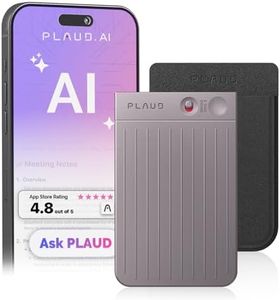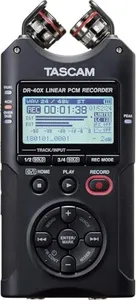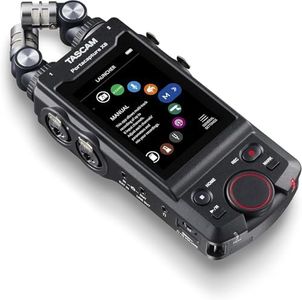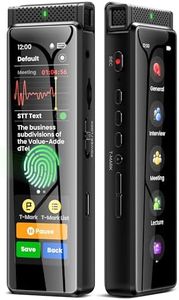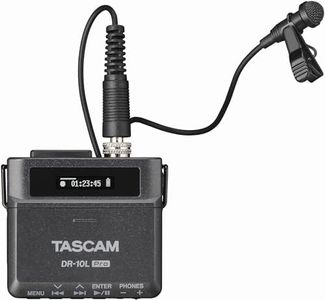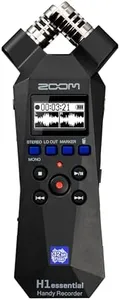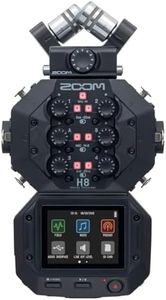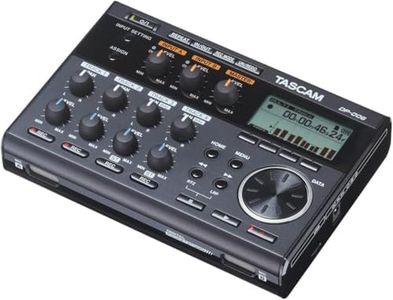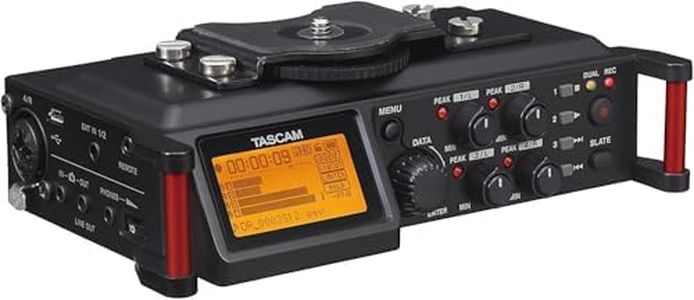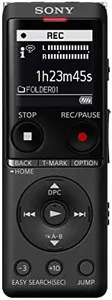We Use CookiesWe use cookies to enhance the security, performance,
functionality and for analytical and promotional activities. By continuing to browse this site you
are agreeing to our privacy policy
10 Best Voice Recording Devices
From leading brands and best sellers available on the web.Buying Guide for the Best Voice Recording Devices
Choosing the right voice recording device can make a big difference depending on what you need it for—be it business meetings, interviews, lectures, podcasts, or creative projects. The process begins by thinking about where and how you’ll use the recorder, how easy it should be to operate, and what you plan to do with your recordings afterward. Understanding key features will help you confidently pick the device that best suits your lifestyle or work habits.Recording Quality (Bitrate & Format)Recording quality is about how clear and accurate the captured audio is, which is mainly determined by the bitrate and the file format a recorder uses. High-quality recordings use higher bitrates and formats like WAV, which are great if you need crystal clear sound, for example in music or professional interviews. Lower bitrates and compressed formats like MP3 save storage space and are usually fine for basic note-taking or casual use. If you want professional results or plan to edit the audio, lean toward higher quality settings; for simple speech or when you need lots of recording time, lower settings may do.
Microphone Type and PlacementVoice recorders use built-in microphones, which come in different types such as mono, stereo, or even multi-directional. Stereo or multi-directional mics can capture a more natural or spacious sound, which is useful for group discussions or outdoor environments, while mono mics focus on picking up sound from one main direction, ideal for single-person dictation. If you're recording in busy places or want to capture multiple speakers, opt for stereo; for individual recordings, mono might be enough.
Storage CapacityStorage capacity refers to how much audio you can save on the device before needing to transfer files off or delete old recordings. More capacity lets you record longer or use higher quality settings without running out of space. Devices come with either built-in memory, memory card slots, or both. Consider your usage—if you need to record long lectures or many sessions before transferring files, go for higher or expandable storage; for short clips or infrequent use, smaller capacities may suffice.
Battery Life and Power OptionsBattery life tells you how long the recorder will last on a single charge or set of batteries, which is crucial if you'll be recording away from outlets for long periods. Some use replaceable batteries, while others have rechargeable ones. Long battery life is vital for events or field work; casual users or those mostly recording at desks may get by with shorter durations. Pick based on how long you typically need to record before recharging or replacing batteries.
Size and PortabilitySize and portability determine how easy it is to carry the recorder around. Compact, lightweight devices slip easily into a pocket or small bag, ideal for on-the-go recording. Larger models may be easier to operate or offer more features but are less convenient to carry. Choose a size that fits your mobility needs—commuters and journalists may need tiny models, while classroom or studio users might prefer larger recorders with bigger displays.
Connectivity OptionsConnectivity options let you move recordings from your device to a computer or other equipment for sharing or editing. These usually include USB ports, memory card slots, and sometimes Bluetooth or Wi-Fi. If you plan to edit audio files or need to send them quickly, look for multiple or high-speed options. Those who just store files or rarely transfer data might be fine with basic USB.
Ease of Use and DisplayThe ease of use depends on factors like button layout, menus, and screen readability. A clear display makes it easier to manage recordings, change settings, and see how much storage or battery is left. Simpler designs are better if you want quick, hassle-free operation, while those who change settings often may prefer detailed displays and more buttons. Think about your comfort with technology and how much you want to interact with device features.

